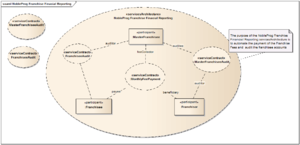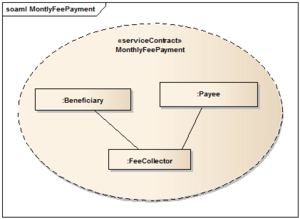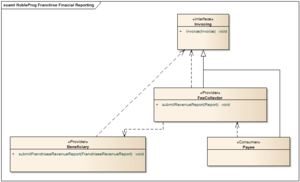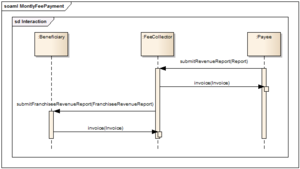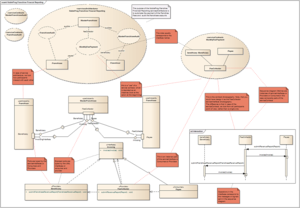SoaML - ServiceArchitecture
Jump to navigation
Jump to search
- A ServicesArchitecture (or SOA) is a network of participant roles providing and consuming services to fulfill a purpose.
- The services architecture defines the requirements for the types of participants and service realizations that fulfill those roles
- The purpose of the services architecture is to specify the SOA of some organization, community, component or process to provide mutual value
A services architecture has components at two levels of granularity:
- The community services architecture:
- the top level view of how independent participants work together for some purpose
- does not assume or require any one controlling entity or process
- A participant services architecture:
- specifies how parts of that participant (e.g., departments within an organization) work together to provide the services of the owning participant
- usually realized by a UML class or component
- participants that realize this specification must adhere to the architecture it specifies
- within a participant, where there is a concept of “management” exists
- A ServicesArchitecture or specification class may be composed from other services architectures and service contracts
- Participants are classifiers defined both:
- the roles they play in services architectures (the participant role)
- the “contract” requirements of entities playing those roles
- Each participant type may “play a role” in any number of services architecture
- Requirements are satisfied by the participant having service ports that have a type compatible with the services they must provide and consume
Steps when developing full architecture
First, let us determine participants and contracts:
Second, let us specify the MontlyFeePayment contract:
Third, let us define Consumers and Providers and dependencies between them:
Forth, we can define the choreography for the contract:
Fifth, we can design ports and exposed interfaces to better understand the design:
Ultimately, let us have a big picture:
Exercise
Based on the example above, design an servicesArchitecture for a "Dealer Network Architecture".
Use following components:
- participants types: Dealer, Manufactures, Shipper
- contracts: Purchasing (roles: buyer, seller), Ship (from, agent), Ship Status (enquire, ship info)
- do not use embeded contracts
